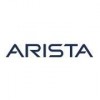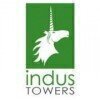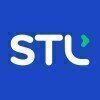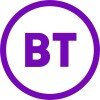


i
Juniper
Networks
Work with us
![]()
Filter interviews by
Juniper Networks Staff Engineer Interview Questions and Answers
13 Interview questions
Security is important in a system to protect against unauthorized access, data breaches, and cyber attacks.
Prevents unauthorized access to sensitive data
Protects against data breaches and cyber attacks
Ensures confidentiality, integrity, and availability of data
Compliance with regulations and standards
Maintains trust and confidence of customers and stakeholders
TCP is a reliable, connection-oriented protocol while UDP is a faster, unreliable, connectionless protocol.
TCP ensures data delivery and error checking while UDP does not.
TCP establishes a connection before data transfer while UDP does not.
TCP is used for applications that require reliable data transfer like email, file transfer, etc. while UDP is used for applications that require speed like online gaming, video ...
Implement a telephone directory program using an array of strings.
Create an array of strings to store the directory
Implement functions to add, delete, and search for entries
Consider using a hash table for faster search times
Include error handling for invalid input
A program to implement a dictionary using an array of strings.
Use an array of strings to store the words and their definitions.
Implement functions to add, delete, and search for words.
Consider using a hash table for faster search times.
Swapping two particular bits of an integer program.
Use bitwise operators to get the values of the two bits to be swapped
Use XOR operator to swap the bits
Shift the bits back to their original positions
Example: Swapping 2nd and 5th bits of 8 (1000) gives 32 (100000)
Example code: num ^= (1 << bit1) | (1 << bit2);
Printing a tree in level order
Use a queue to store nodes in level order
Enqueue root node and print its value
Dequeue the node and enqueue its children
Repeat until queue is empty
TCP packet header fields and their usage
TCP packet header consists of 20 bytes
Fields include source and destination ports, sequence and acknowledgement numbers, flags, window size, and checksum
Source and destination ports identify the endpoints of the connection
Sequence and acknowledgement numbers are used for reliable data transfer
Flags indicate the purpose of the packet, such as SYN, ACK, FIN, RST
Window size is ...
IP packet header fields and their usage
Version: indicates the IP version being used (IPv4 or IPv6)
Header Length: specifies the length of the IP header
Type of Service: used to prioritize packets
Total Length: specifies the total length of the IP packet
Identification: used to identify fragments of a larger packet
Flags: used to control fragmentation
Fragment Offset: used to reassemble fragmented packets
Time to Live: sp...
The TCP segment header consists of various components that help in the transmission of data over a network.
Source Port
Destination Port
Sequence Number
Acknowledgment Number
Data Offset
Reserved
Flags
Window Size
Checksum
Urgent Pointer
TCP is connection-oriented, reliable, and slower, while UDP is connectionless, unreliable, and faster.
TCP is connection-oriented, meaning it establishes a connection before sending data, while UDP is connectionless and does not establish a connection.
TCP is reliable as it ensures all data packets are received in order and retransmits any lost packets, while UDP does not guarantee delivery or order of packets.
TCP i...
Juniper Networks Staff Engineer Interview Experiences
2 interviews found
I appeared for an interview before May 2021.
(2 Questions)
Round duration - 45 minutes
Round difficulty - Easy
Technical Interview round with questions on DSA
- Q1.
Level Order Traversal of Binary Tree
Given a Binary Tree of integers, your task is to return the level order traversal of the tree.
Input:
The first line contains an integer 'T' which denotes the number... - Ans.
Return the level order traversal of a Binary Tree of integers.
Perform a level order traversal using a queue data structure
Start by pushing the root node into the queue
Pop each node from the queue, print its value, and push its children into the queue
- Q2.
Swap Adjacent Bit Pairs Problem Statement
Given an integer
N, your task is to compute the number that results from swapping each even position bit ofN's binary representation with its adjacent odd bit to... - Ans.
Swap each even position bit of an integer with its adjacent odd bit to the right in binary representation.
Iterate through the binary representation of the integer and swap adjacent bits at even positions with odd positions.
Convert the modified binary representation back to an integer to get the final result.
Handle edge cases like leading zeros in binary representation.
(3 Questions)
Round duration - 60 minutes
Round difficulty - Easy
Technical round with questions on Networking.
- Q1. What are the various components of an IP packet header?
- Ans.
Components of an IP packet header
Version
Header Length
Type of Service
Total Length
Identification
Flags
Fragment Offset
Time to Live
Protocol
Header Checksum
Source IP Address
Destination IP Address
Options
- Q2. What is the difference between TCP and UDP?
- Ans.
TCP is connection-oriented, reliable, and slower, while UDP is connectionless, unreliable, and faster.
TCP is connection-oriented, meaning it establishes a connection before sending data, while UDP is connectionless and does not establish a connection.
TCP is reliable as it ensures all data packets are received in order and retransmits any lost packets, while UDP does not guarantee delivery or order of packets.
TCP is slo...
- Q3. What are the various components of a TCP segment header?
- Ans.
The TCP segment header consists of various components that help in the transmission of data over a network.
Source Port
Destination Port
Sequence Number
Acknowledgment Number
Data Offset
Reserved
Flags
Window Size
Checksum
Urgent Pointer
Interview Preparation Tips
Tip 1 : Must do Previously asked Interview as well as Online Test Questions.
Tip 2 : Go through all the previous interview experiences from Codestudio and Leetcode.
Tip 3 : Do at-least 2 good projects and you must know every bit of them.
Tip 1 : Have at-least 2 good projects explained in short with all important points covered.
Tip 2 : Every skill must be mentioned.
Tip 3 : Focus on skills, projects and experiences more.
Skills evaluated in this interview
Interview Questionnaire
10 Questions
- Q1. Bit manipulation programs?
- Q2. IP packet header and meaning of each field and usage of each field
- Ans.
IP packet header fields and their usage
Version: indicates the IP version being used (IPv4 or IPv6)
Header Length: specifies the length of the IP header
Type of Service: used to prioritize packets
Total Length: specifies the total length of the IP packet
Identification: used to identify fragments of a larger packet
Flags: used to control fragmentation
Fragment Offset: used to reassemble fragmented packets
Time to Live: specifi...
- Q3. IP fragmentation
- Q4. TCP packet header and meaning of each field and usage of each field
- Ans.
TCP packet header fields and their usage
TCP packet header consists of 20 bytes
Fields include source and destination ports, sequence and acknowledgement numbers, flags, window size, and checksum
Source and destination ports identify the endpoints of the connection
Sequence and acknowledgement numbers are used for reliable data transfer
Flags indicate the purpose of the packet, such as SYN, ACK, FIN, RST
Window size is used ...
- Q5. Dictionary implementation program
- Ans.
A program to implement a dictionary using an array of strings.
Use an array of strings to store the words and their definitions.
Implement functions to add, delete, and search for words.
Consider using a hash table for faster search times.
- Q6. Telephone directory implementation program
- Ans.
Implement a telephone directory program using an array of strings.
Create an array of strings to store the directory
Implement functions to add, delete, and search for entries
Consider using a hash table for faster search times
Include error handling for invalid input
- Q7. Tcp Vs udp
- Ans.
TCP is a reliable, connection-oriented protocol while UDP is a faster, unreliable, connectionless protocol.
TCP ensures data delivery and error checking while UDP does not.
TCP establishes a connection before data transfer while UDP does not.
TCP is used for applications that require reliable data transfer like email, file transfer, etc. while UDP is used for applications that require speed like online gaming, video strea...
- Q8. Why security is important in a system?
- Ans.
Security is important in a system to protect against unauthorized access, data breaches, and cyber attacks.
Prevents unauthorized access to sensitive data
Protects against data breaches and cyber attacks
Ensures confidentiality, integrity, and availability of data
Compliance with regulations and standards
Maintains trust and confidence of customers and stakeholders
- Q9. Level printing of a tree program
- Ans.
Printing a tree in level order
Use a queue to store nodes in level order
Enqueue root node and print its value
Dequeue the node and enqueue its children
Repeat until queue is empty
- Q10. How do you swap two particular bits of an integer program?
- Ans.
Swapping two particular bits of an integer program.
Use bitwise operators to get the values of the two bits to be swapped
Use XOR operator to swap the bits
Shift the bits back to their original positions
Example: Swapping 2nd and 5th bits of 8 (1000) gives 32 (100000)
Example code: num ^= (1 << bit1) | (1 << bit2);
Skills evaluated in this interview
Top trending discussions






Interview questions from similar companies

Interview Questionnaire
3 Questions
- Q1. Why do you want to join this company?
- Ans.
I am excited to join this company because of its reputation for innovation and commitment to employee growth.
I am impressed by the company's track record of developing cutting-edge software solutions.
I appreciate the emphasis on professional development and growth opportunities for employees.
I am excited about the prospect of working with a talented and dedicated team.
I believe that this company's values align with my ...
- Q2. Who is your role model?
- Ans.
My role model is Elon Musk.
I admire his innovative thinking and determination to push boundaries.
His ability to lead multiple successful companies is inspiring.
His focus on sustainable energy and space exploration aligns with my values.
I strive to emulate his work ethic and passion for making a positive impact on the world.
- Q3. What extra-curricular activities have you been involved in?
- Ans.
I have been involved in various extra-curricular activities such as volunteering, sports, and music.
Volunteered at local animal shelter
Played on intramural basketball team
Participated in school choir
Attended coding workshops and hackathons
Interview Preparation Tips
Experience: I consulted my seniors for preparation of my resume. I believe that seniors provide the best possible insights in this regards. I had a standard resume for all the companies.
Round: Test
Experience: I had prepared for the CAT examination which helped me in these written tests. The first round was the written test. The criterion for the written test was to have a CGPA more than 6.0. There was an aptitude test and a technical test. The technical test consisted of programming questions based on C++ and data structures. From data structures they asked a lot questions based on tree traversals and from C++. A large number of questions from pointers and arrays were also asked.
The aptitude test was slightly easier than the CAT examination standards. Majority of the questions were related to data interpretation and some were of based on logical reasoning. The total duration of the both the tests combined was 90 minutes.
Around 50 people appeared for the first round and nearly 13 got shortlisted for the next round.
Tips: For the written tests, particularly the aptitude section, if would really help if you have prepared for the CAT examination. There is a book written by an author named R.S. Agarwal which would prove to be beneficial from the point of view of these written tests.
Duration: 90 minutes
Round: Group Discussion
Experience: I did not prepare much for the GD’s. However I did keep myself abreast with certain latest happenings.There were no group activities conducted in the recruitment process of Century Link.
Round: HR Interview
Experience: For HR interviews I prepared answers to some frequently asked HR questions. I found these questions on the internet. Generally the questions asked in the interviews are related to the profile on offer; for instance in A2Z interview I was asked a lot of questions from power systems since it was a core company and in Century Links I was asked questions from C++ and data structures since they had come to recruit for a software engineering profile.
Round: Technical Interview
Experience: In this interview I was questioned on my C++ and data structure knowledge. They asked me questions on pointers and further asked me to explain the concept of dangling pointers. They did not want me to write down the complete code with proper syntax's of the problems asked to me. They only asked me to write the algorithms of the various problems.
They also asked me some puzzles. Unfortunately, I was not able to solve any of them. During the course of the interview they asked me to specify the reason for my keen interest in joining an IT company.
At the end of first interview some candidates were shortlisted and called for the second round of interview.
Round: Technical Interview
Experience: The second interview was conducted by a senior company official. He enquired about my project and again, like in the first interview, asked me to state the reason for my interest in joining an IT company.This interview round was an elimination round.
Round: HR Interview
Experience: The interview was an HR interview. Candidates who reached till this interview were all selected; basically this interview was like a formality to check the candidate’s fit with the company.
College Name: IIT ROORKEE
Motivation: I had never heard of the company before the recruitment season. I attended the PPT organised by the company, I found the company to be a well reputed/established company and thus applied to it. The profile was open for Electrical, Computer Science, Mechanical and Electronics engineering students.

I appeared for an interview before Jan 2016.
Interview Questionnaire
7 Questions
- Q1. Give a brief description about your education, past job profile and other questions.
- Q2. Why did you quit your last organization after just 2.5 years?
- Ans.
Seeking new challenges and growth opportunities.
I felt that I had reached a plateau in my role and was no longer being challenged.
I was interested in exploring new technologies and wanted to work on more innovative projects.
I wanted to work in a more collaborative and dynamic environment.
I left on good terms and have maintained positive relationships with my former colleagues.
I am excited to bring my skills and experie...
- Q3. Why do you want to join Centurylink?
- Ans.
I am excited to join Centurylink because of their reputation for innovation and commitment to customer satisfaction.
Centurylink has a strong focus on developing cutting-edge technology solutions
The company values customer feedback and strives to provide excellent service
I am impressed by Centurylink's dedication to diversity and inclusion in the workplace
- Q4. Why did you relocate to Noida?
- Ans.
Relocated to Noida for better career opportunities and growth.
Noida is a hub for IT companies and offers a lot of job opportunities in the software development field.
The city has a good work-life balance and a lower cost of living compared to other metropolitan cities.
I was also attracted to the diverse culture and the opportunity to work with people from different backgrounds.
I did my research and found that Noida has...
- Q5. Are you ok to work in US shift?
- Ans.
Yes, I am comfortable working in US shift.
I have prior experience working in US shift.
I am flexible with my work timings.
I understand the importance of meeting project deadlines.
I am willing to adjust my personal schedule to accommodate work requirements.
- Q6. Where do you put up?
- Ans.
I currently reside in New York City.
I live in an apartment in Manhattan.
My neighborhood is known for its diverse food options.
I have easy access to public transportation.
I enjoy exploring the city in my free time.
- Q7. Solve 12 Mainframe Puzzles
Interview Preparation Tips
Experience: I told them all about the previous companies and my past job profile as a Mainframe Developer.
I gave a valid reason for quitting the previous company.
I cited that the reason to relocate to Noida was my wedding.
I was not okay to work in shifts, hence I denied.
I was putting up in Noida itself back then.
Round: Puzzle Interview
Experience: I was given a list of 12 Mainframe puzzles with questions from Cobol, DB2 and JCL.
I could solve 8 of them correctly.
Tips: Prepare puzzles as they give just 1 minute per question and not more.

Interview Preparation Tips
Experience: Was accepted through the pre placement offer after a satisfactory internship during the summer.
There was a small test after the internship. Work done in the internship in co-ordination with mentor, employees and manager has more weight-age.
General Tips: Just brush up on your fundamentals. The questions asked will just be a direct or indirect applications of what you have learnt. Good programming practice is also needed.
Good knowledge about Operating systems, Data structures, Networking and Programming is what they generally look for while hiring.
A good internship project helped in securing the PPO.
Skills:
College Name: NIT Surathkal

I appeared for an interview before Apr 2021.
(7 Questions)
Round duration - 60 minutes
Round difficulty - Easy
Technical Interview round with questions on OOPS and OS mainly.
- Q1. What are Little Endian and Big Endian in the context of computer architecture?
- Ans.
Little Endian and Big Endian refer to the order in which bytes are stored in computer memory.
Little Endian stores the least significant byte first, while Big Endian stores the most significant byte first.
Little Endian is commonly used in x86 architecture, while Big Endian is used in architectures like SPARC and PowerPC.
Endianness can affect data transmission between systems with different byte orders.
- Q2. Write a program to determine if your system is little-endian or big-endian.
- Ans.
Program to determine system's endianness
Check the endianness by storing a multi-byte integer and checking the byte order
Use bitwise operations to extract the least significant byte
If the least significant byte is at the lowest memory address, it's little-endian
If the least significant byte is at the highest memory address, it's big-endian
- Q3. What is the volatile keyword in programming?
- Ans.
The volatile keyword in programming is used to indicate that a variable's value can be changed unexpectedly.
Volatile keyword is used in multithreaded programming to prevent compiler optimizations on variables that can be changed by other threads.
It tells the compiler not to cache the variable's value in a register, ensuring that every access is made to the variable's memory location.
Commonly used in embedded systems pr...
- Q4. What is the use of a function pointer in C?
- Ans.
Function pointers in C are used to store the address of functions, allowing for dynamic function calls and callbacks.
Function pointers can be used to implement callbacks in event-driven programming.
They can be used to switch between different functions at runtime.
Function pointers are commonly used in implementing data structures like function pointers in an array of function pointers.
Example: void (*funcPtr)(int) = &a...
- Q5. Design a data structure to implement multi-threading.
- Ans.
Design a data structure for multi-threading
Use a thread-safe queue to manage tasks for each thread
Implement a lock or semaphore to control access to shared resources
Consider using condition variables for synchronization
Use atomic operations for shared variables to prevent race conditions
- Q6. What does a kernel do?
- Ans.
The kernel is the core component of an operating system that manages system resources and provides a bridge between software and hardware.
Manages system resources such as CPU, memory, and I/O devices
Provides a bridge between software applications and hardware components
Handles tasks such as process scheduling, memory management, and device drivers
Controls communication between hardware and software layers
- Q7. What is a storage class in programming?
- Ans.
A storage class in programming defines the scope and lifetime of variables.
Storage classes include auto, register, static, and extern.
Auto variables are created when a function is called and destroyed when the function ends.
Register variables are stored in CPU registers for faster access.
Static variables retain their value between function calls.
Extern variables are declared outside of any function and can be accessed ...
Round duration - 30 minutes
Round difficulty - Easy
HR round with typical behavioral problems.
Interview Preparation Tips
Tip 1 : Must do Previously asked Interview as well as Online Test Questions.
Tip 2 : Go through all the previous interview experiences from Codestudio and Leetcode.
Tip 3 : Do at-least 2 good projects and you must know every bit of them.
Tip 1 : Have at-least 2 good projects explained in short with all important points covered.
Tip 2 : Every skill must be mentioned.
Tip 3 : Focus on skills, projects and experiences more.
Skills evaluated in this interview

Software Developer Interview Questions & Answers
Tejas Networksposted on 2 Dec 2015
Interview Preparation Tips
For getting into this company you should have the knowledge of OS, Database,Networks and OOP concepts. "Job profile was software developer.
The questions asked to me were related to OS concepts like deadlocks process and threads n all. From networks they asked me about the wifi drivers installed in your system. They asked about dynamic programming and they gave me one question to solve using dynamic programming. Then they asked me to write two more codes . From database they asked me about the errors which we will get if we do these things in the table. They asked me about the hashmap and how does it work and why it takes constant time in data retrieval. They asked me about the OOPs concepts and the virtual class implementation in detail. In short they asked me questions from every field."
Skill Tips: For the interviews karumanchi is the best book.
Presentation skills matters alot. No matter how much u know, presenating your knowledge in front of the interviewer matters alot. Speaking very fast during an interview may lead you to rejections (personal experience).
Skills:
College Name: NIT Surathkal

I applied via Campus Placement and was interviewed in Jan 2016. There were 3 interview rounds.
Interview Preparation Tips
Experience: Tested basics in each subject
Round: Technical Interview
Experience: Had asked me about my projects in detail. Some DSA questions were asked. Asked to code in C for some questions.
Round: Technical Interview
Experience: Asked questions about data structures and some more algorithms. Tested in Probability and some quant.
College Name: IIT Madras

Interview Preparation Tips
Tips: It will be good to have a GPA of 8 and above
Round: Test
Experience: Questions were easy it were good at C and basic maths. Questions were distributed on all aspects of computer science such as Operating Systems, Few Output Question, Data Structures and Application layer networking . In basic aptitude most questions fall under Probability, distance and time and few others.
Duration: 60 minutes
Total Questions: 50
Skills: Communication, Basic Coding, Math Puzzle
College Name: NIT Surathkal

Interview Preparation Tips
Experience: The test was MCQ type. It comprised of questions from Operating Systems, Data Structures, Microprocessors, logical Reasoning, Aptitude and Computer Networks. No negative marking was there.
Tips: One needs to be fast as you can't spend much time on one question.
Duration: 60 minutes
Total Questions: 50
Round: Technical Interview
Experience: I was given 2 coding questions to solve and basics of oops, operating systems, data structures and networks were asked. 3-4 questions were asked in each topic mentions above. The interviewer also asked 2 puzzles which were the standard ones. He first asked me if I knew the topic or not, then only he asked me questions about it. But that doesn't mean that you can skip all the above mentions topics.
Tips: Be relaxed and confident and try to discuss your approach with the interviewer.
Round: Technical Interview
Experience: 2 Coding questions and 3-4 questions from operating systems and networks.Questions also from the mentioned projects.
Round: HR Interview
Experience: Standard HR interview with questions like what Cisco does and why they should hire you. He also asked me questions from the CV.
Tips: Be confident and mug up your cv well
Round: HR Interview
Experience: It was just a formality where he just asked about my background and whether I would be able to move to bangalore and Why I want to join Cisco.
Skills: Confidence, Problem Solving Skills, Operating System Basics, Coding Skills, Object Oriented Programming (OOP) Basics, Computer Networking, Data Strrutures
College Name: IIT Guwahati
Juniper Networks Interview FAQs
Some of the top questions asked at the Juniper Networks Staff Engineer interview -
Tell us how to improve this page.
Juniper Networks Interviews By Designations
- Juniper Networks Software Engineer Interview Questions
- Juniper Networks Software Developer Interview Questions
- Juniper Networks Software Engineer IV Interview Questions
- Juniper Networks Intern Interview Questions
- Juniper Networks Staff Engineer Interview Questions
- Juniper Networks Senior Staff Engineer Interview Questions
- Juniper Networks Test Engineer Interview Questions
- Juniper Networks Software Engineer II Interview Questions
- Show more
Interview Questions for Popular Designations
Overall Interview Experience Rating
based on 1 interview experience
Interview Questions from Similar Companies
Juniper Networks Staff Engineer Reviews and Ratings
based on 11 reviews
Rating in categories
|
Software Engineer
286
salaries
| ₹11 L/yr - ₹39.8 L/yr |
|
Software Engineer III
272
salaries
| ₹16 L/yr - ₹33 L/yr |
|
Software Engineer IV
186
salaries
| ₹22 L/yr - ₹56 L/yr |
|
Software Engineer2
178
salaries
| ₹10 L/yr - ₹21 L/yr |
|
Technical Support Engineer
66
salaries
| ₹12 L/yr - ₹32.8 L/yr |

Indus Towers

Sterlite Technologies

Cisco

BT Business
- Home >
- Interviews >
- Juniper Networks Interview Questions








